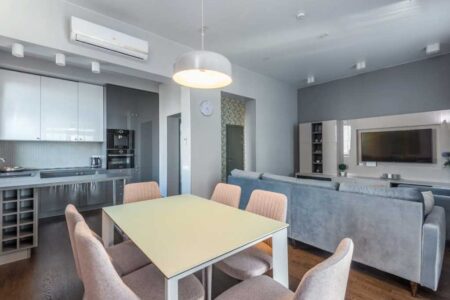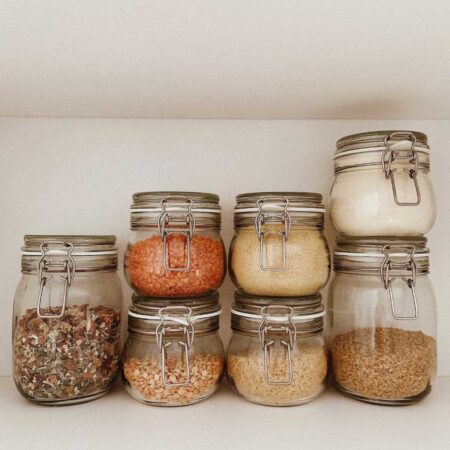Quick and easy advice from www.kan-service.com—an HVAC contractor in Los Angeles.
Improve Air Circulation and Efficiency
Air balancing will improve air circulation, increase energy efficiency, and improve the overall performance of your HVAC system. For the owner, this means delivering the right amount of air (hot or cold) to each room, making your facility more comfortable.
Air balancing involves an HVAC professional inspecting and adjusting your system using their skills and tools. They examine the air intake and output and adjust them accordingly.
“Balancing is the most important step to ensure your system is comfortable and running efficiently.”
In this article, I will explain how to adjust (balance) your airflow to ensure comfort. I will also discuss methods that may require the involvement of an HVAC professional and help you understand how a professional will perform the balancing.
What is Air Balancing?
Air balancing is a process that involves modifying an existing HVAC system to distribute air evenly throughout a facility. All zones will have the necessary heat supply to keep all the components of your HVAC system working in harmony.
15 Tips for Maintaining the Temperature Balance in Your Home
1. Close or Open the Valve
Simple but effective. You can move the valve flap, limiting the room’s airflow. But do not close the vents completely; this can lead to other problems in your HVAC system.
In warm weather, open the valves on the top floor and partially close them on the home’s ground floor. In cold weather, reverse the process.
Try this process:
- Step 1: Set the temperature to 24–25 degrees.
- Step 2: Adjust proportionally until you get a feel for what works for your family.
- Step 3: Do a test run of your settings (after 24 hours) to get a feel for whether you have reached the ideal temperature.
- Step 4: Continue until you reach the ideal temperature.
2. Try a 1-degree offset
If you live in a two-story home with two thermostats, set the temperature 1 degree apart.
Here’s what I mean:
Set the thermostat 1 degree apart for each floor. For example, set the upstairs thermostat to 25 degrees and the downstairs thermostat to 24 degrees. This will help combat uneven temperatures.
3. Check the Filters for Cleanliness
There are many reasons why you should keep your filters clean:
- Improved air quality: Cleaning out the debris collected on the filters helps airflow.
- Better efficiency: Reducing airflow through your heating and cooling system can cause it to overheat and turn off too quickly.
- Extended equipment life: Dirty filters are the most common cause of HVAC system failure.
- Lower energy bills: A clean filter helps your system run more efficiently, saving you 5–15% on your bill.
4. Install Window Treatments to Keep the Heat Out
Your windows affect the comfort level in every room. Windows without curtains, blinds, or shades can heat a room faster than the thermostat can regulate the temperature. Window sashes can improve energy efficiency and overall comfort.
5. Avoid Placing Electronic Equipment Near the Thermostat
Placing TVs or computers near the thermostat can disrupt heat distribution and cause your system to overwork. Ensure that the thermostat is not picking up heat from electronics.
6. Avoid Restricting Airflow
Do not block vents with furniture or objects. Vents need at least 18 inches of space for free airflow. If necessary, use magnetic deflectors to redirect airflow around furniture.
7. Set Your Thermostat’s Fan Setting to “ON”
Using the “ON” setting keeps the fan running continuously, ensuring stable air circulation. However, this may slightly increase utility bills.
8. Re-Air the Ducts
Repair damage or defects in the ducts. Problems in ductwork can cause uneven air distribution, leading to some rooms being too warm or too cool. Always consult an HVAC professional for proper repairs.
9. Check the Insulation
Hire a professional to inspect your ductwork insulation. Poor insulation can lead to inefficient HVAC performance.
10. Check and Adjust the Fan Speed of the Ventilation System
Adjusting fan speed can improve airflow, but ensure you know what you’re doing.
11. Install Additional Check Valves if Needed
A second check valve can reduce static pressure if there are bottlenecks in the return airflow.
12. Use Two Air Splitters
For larger HVAC systems, consider using two fans—one in the basement and another in the attic—to manage airflow effectively.
13. Know the Size of Your HVAC System
Ensure that your HVAC system is sized correctly for your property. An oversized or undersized unit can cause inefficiency and discomfort. Consult an HVAC professional for proper sizing.
What Can Air Balancing Do for You Today?
- Efficiency:
- Improved air circulation.
- Lower energy bills.
- Extended equipment life.
- Stress Prevention:
- Eliminate dirt/dust/mold problems.
- Improve comfort and eliminate hot/cold spots.
Conclusion
When in doubt, the best recommendation is to seek professional advice from an HVAC professional.
Some of the airflow adjustment tips are simple and can be done today.









